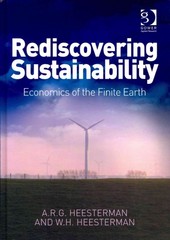Please solve the following questions:
Question 1 (2 points): Suppose Scarlett purchased a 3-year bond with the face value of 20,000 in the primary market. The current risk-free interest rate was 0.5%, and a risk premium on that bond is 3%. A year later after collecting her yearly coupon payment, Scarlett decided to sell that bond in the secondary market. By that time, the economic situation has improved, and the risk-free interest rate has risen to 1%. What is Scarlett's rate of return for the one-year period she held the bond? Please note, to get full points, you need to show all your steps. Question 2 (2 points): Consider two stocks. For each, the expected dividend next year is $100, and the expected growth rate of dividends is 3 percent. The risk premium is 3 percent for one stock and 8 percent for the other. The economy's safe interest rate is 5 percent. a). (1 point): Use the Gordon growth model to compute the price of each stock. Why is one price higher than the other? What does the difference in risk premiums tell us about the dividends from each stock? Please note, to get full points, you need to show all your steps and explain your answer. b). (1 point): Suppose the expected growth rate of dividends rises to 5 percent for both stocks. Compute the new price of each. Which stock's price changes by a larger percentage? Explain your answer. Please note, to get full points, you need to show all your steps and explain your answer. Question 3 (2 points): Using the loanable funds theory, show in a graph how each of the following events affects the supply and demand for loans and the equilibrium real interest rate: a). (1 point): A war leads the government to increase spending on the military. (Assume taxes do not change.). Please note, to get full points, you need to illustrate (on the proper, well-labeled graph) and explain. b). (1 point): Someone invents a new kind of computer that makes firms more productive. Many firms want to buy the computer. Higher productivity also increases people's confidence in the economy, so consumers see less need to save. Please note, to get full points, you need to illustrate (on the proper, well-labeled graph) and explain. Question 4 (2 point): Draw the yield curve described as follows: . Interest rates: 1% in year 1; 2% in year 2; 2% in year 3; 3% in year 4. . Term premiums: 0.5% for a one-year bond, rising by 0.25% for each additional year of maturity. What does this yield curve suggest is the predominant short to medium-term economic outlook among market participants? Please note, to get full points, you need to illustrate and explain. Precisely, you need to label the graph, identify the points (and show how you computed all the points), name the type of the curve and prove your point. Question 5 (2 points): Anne, who is a Canadian saver, would like to invest $65,000 dollars (Canadian dollars to be precise). She is considering two options, buying a Canadian discount bond or a Russian discount bond, and Anne would like you compare returns on both options. The world risk-free rate is 0.25%. There is no risk premium on the Canadian discount bond, and the risk premium on the Russian discount bond is 5%. The current nominal Russian-Canadian exchange rate is ecan-56 Rubbles (Rubbles per Canadian dollar). Before the pay-out next period, you expect (and of course, Anne agrees with you), Rubbles will depreciate relative to Canadian dollar, efuture=60 Rubbles (again, Rubbles per Canadian dollar). Based on your forecast, what is the expected rate of return (% yield) on each investment. For simplicity, please assume zero transaction costs and no difference in taxes (zero taxes on both options). Please note, to get full points, you need to show all your steps







